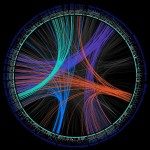Link to Pubmed [PMID] – 18374297
Am. J. Hum. Genet. 2008 Apr;82(4):873-82
Lebanon is an eastern Mediterranean country inhabited by approximately four million people with a wide variety of ethnicities and religions, including Muslim, Christian, and Druze. In the present study, 926 Lebanese men were typed with Y-chromosomal SNP and STR markers, and unusually, male genetic variation within Lebanon was found to be more strongly structured by religious affiliation than by geography. We therefore tested the hypothesis that migrations within historical times could have contributed to this situation. Y-haplogroup J*(xJ2) was more frequent in the putative Muslim source region (the Arabian Peninsula) than in Lebanon, and it was also more frequent in Lebanese Muslims than in Lebanese non-Muslims. Conversely, haplogroup R1b was more frequent in the putative Christian source region (western Europe) than in Lebanon and was also more frequent in Lebanese Christians than in Lebanese non-Christians. The most common R1b STR-haplotype in Lebanese Christians was otherwise highly specific for western Europe and was unlikely to have reached its current frequency in Lebanese Christians without admixture. We therefore suggest that the Islamic expansion from the Arabian Peninsula beginning in the seventh century CE introduced lineages typical of this area into those who subsequently became Lebanese Muslims, whereas the Crusader activity in the 11(th)-13(th) centuries CE introduced western European lineages into Lebanese Christians.

